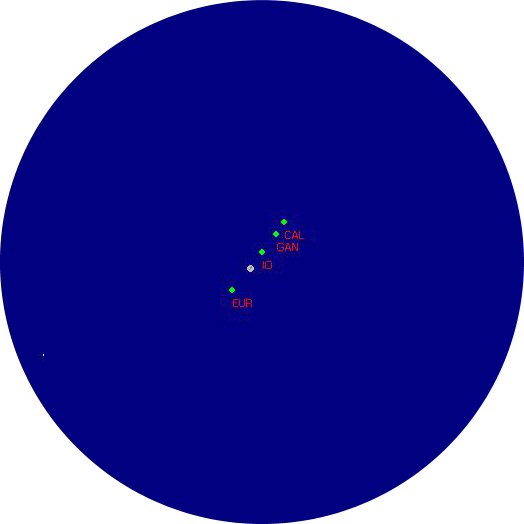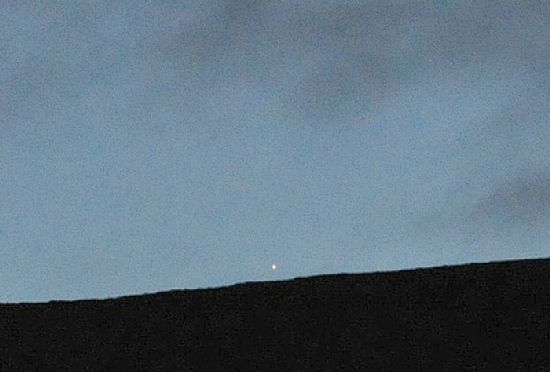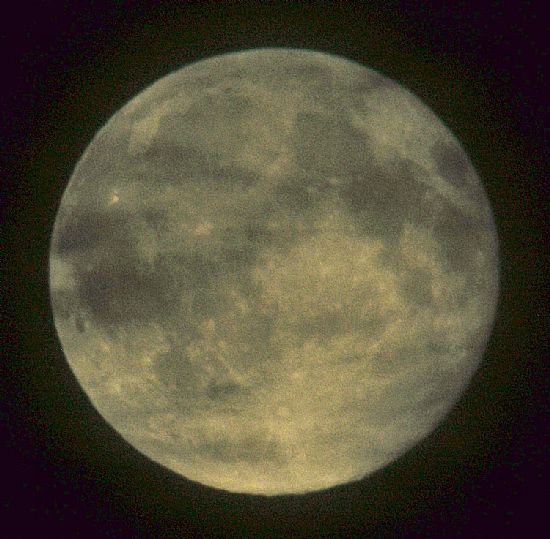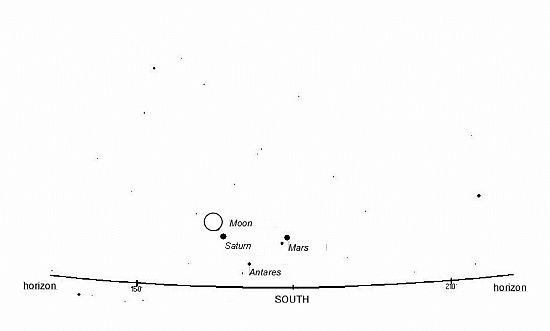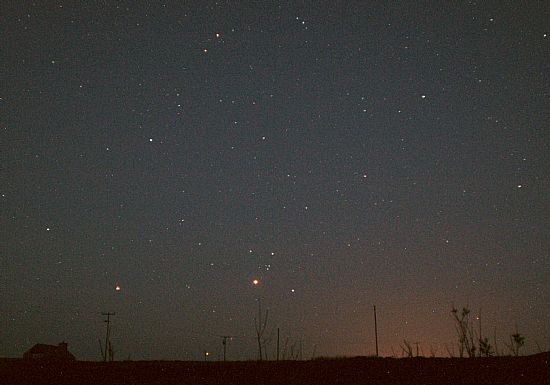 NORTHERN SKIES | sitemap | log in NORTHERN SKIES | sitemap | log in
|
 |
||
| This is a free Spanglefish 1 website. | ||
ACTIVE SKY 2019 June 05. NOCTILUCENT CLOUDS (NLCs): NLCs are a metrological phenomena and once seen they are not likely to be confused with weather clouds at lower levels above the Earth’s surface. They are mostly seen in latitudes above 50° and form at heights of between 75 to 85 kilometres. In composition they also resemble other atmospheric clouds but are thought to contain predominantly ice crystals. We say thought because even today they are not fully researched, curious as this may seem! There is also considerable debate as to their mode of formation. The earliest records of the clouds go back a mere 165 years; this would suggest they may be a consequence of modern, human industrial activity of one sort or another, more specifically aviation. It is worth noting that there are approximately 100,000 civil aircraft airborne at any given time worldwide all pumping out noxious exhaust gasses at high altitudes of 30,000 feet or more. Some components from the exhaust continue to rise into the rarefied regions of the Earth’s upper atmosphere. NLCs are not to be confused with aircraft condensation trails. The latter may spread out and persist as high cirrus. In this sense contrails, as they are frequently referred to, can be understood to have an impact on weather and ultimately upon climate. NLCs generally only to be seen a few weeks close to summer solstice and in full twilight. However, here on Rousay we have recorded NLCs in late August. 2018 May 17th at 21h 27m UT, the Moon and Venus over Knitchin Hill, Rousay.
Moon phase 8.1%, altitude 9.3°, visual mag. –7.0 Venus phase 84.3% altitude 13.4°, visual mag. –4.0 Apparent angular separation Venus/Moon: 5.7° A composite image: Nikkor 135mm f/2.8 and Nikkor 400mm f/5.6; D300 SLR (average exposure 1/200 sec f4.5). 2018 February 23: Occultation of bright star, Aldebaran, by the Moon. 23 February 2018, 17h 52m16s. Aldebaran 2min. 12 sec. from reappearance. Exposure: 1/400 second. 100mm f/9 apochromatic refracting telescope.Photo: John Vetterlein. 2018 January 05: Occultation of Regulus (alpha Leonis visual mag. 1.36) The first observation with the 100 mm achromatic telescope using a power of 45x was made at 07h 42m on January 5th. Skies had been mostly cloudy over the previous six hours the Moon having just emerged form a puckered sky into a region a clear, twilit sky with cumulus rolling up from the NNE. Things looked promising! But within a few minutes cloud resumed and the remaining observations up to the time of first contact (08h 10m 31s) were made through cloud of varying opacity. Despite the conditions, some 35 images were secured using a Dimage F200 digital camera working at ISO 400 with speeds of 1/100 to 1/350 second most of which showed Regulus quite well. Cloud then thickened making it impossible to observe the reappearance of Regulus at approximately 09h 05m 45s. Provocatively conditions then improved considerably for around ten minutes. Data: Altitude of Regulus at first contact: 19.3° Altitude of Regulus at final contact: 12.4° Moon' phase: 85.4% Moon's apparent diameter: 1963.52" Moon's distance: 367373.2 Km (light time 1.2 sec.) Regulus's distance: 77.5 +/- 1.4 light years
January 05 at 05h 08m 10s12. A 1/365 sec. exposure ISO 400. 100mm f/9 achromatic refractor power 45x. (Click on first image to enlarge.) 2017 December 31: Occultation of Aldebaran (alpha Tauri, mean visual mag. 0.75). The Moon and Aldebaran had been imaged with a 135mm focal length lens the previous evening and night; conditions were then reasonable with some hope of a clear sky for the occultation within the hour after midnight. The first observation with the 100 mm achromatic telescope using a power of 45x was made at 00h 50m on December 31st. (The use of a Nikon 500mm f/4 lens with D300 camera had to be abandoned due to the vagaries of the weather threatening rain at any moment.) Aldebaran gave a steady image (altitude 38°) despite passing cloud, some light but varying a good deal and sometimes threatening to extinguish the view. The star was then 3' 22" from the Moons dark limb. The apparent lunar movement relative to Aldebaran was then close to 2 arc-seconds per second of time. A number of images were obtained through the eyepiece of the telescope up to first contact timed at 00h 56m 41s (accuracy ±1 second of time). We give a full disc image showing Aldebaran (left) 3' 20" from the Moon's dark limb at 00h 50mm 10s and an enlarged section of the Moon's limb within 2 seconds of first contact at 00h 56m 39s. We were not able to observe the emergence of Aldebaran approximately one hour later owing to dense cloud. The Moon's apparent diameter at this occultation was 2013.78". (Distance: 359996 km light time: 1.2s). Aldebaran (alpha Tau) Apparent diameter 0.020" approx. (red giant star). (Distance or light time: 65 years. At this distance the light source from Aldebaran, as viewed from Earth, is to all intents and purposes a point without perceptible surface area. The occultation if viewed from above the Earth's atmosphere would give an immediate cut-off for the star at the Moons Occulting limb. (i.e. no fading as with a planet.) However the light from the star is subjected to distortion in the atmosphere resulting in as tangible "cylinder" of light and so there is as very small, perceptible fading at "contact". This is shown in the image as a blurring of the stars image close to the Moons limb. To the human eye, the light is sensible an instantaneous cut-off. The large crater at the lunar terminator is Hevelius, diameter 109 km.
2017 August 26: "Vermin of the Skies". Neptune imaged with Tokina 300mm f/2.8 and Nikon D300 SLR. exp: 25 sec ISO-640 field dia. 2° 15' approx. (brightest star 78 Aqr. vis. mag. 6.19 dia inner circle 30 arc-min approx. (Neptune at centre). Limiting visual mag. 13.5. Altitude of Neptune 15° 37'. Three artificial satellite trails here, six on the un-cropped image
2017 May 14: Jupiter Update. Two images of Jupiter secured with a 300mm f/4.5 Nikkor lens attached to a D300 SLR mounted on an ordinary camera tripod (static camera). The exposures were: 4 seconds and 1/10th second respectively. The first image (21h 25m) was in strong twilight and grossly overexposed requiring much processing. However, it gave in the end a superior image to faster exposures up to 1/30th second taken at this time. The second image (22h 53m) required little processing, with Jupiter in a somewhat darker sky. The star below in constellation Virgo is TYC 4953-1224-1, mag. 6.45. Jupiter position for 21h 25m: Right ascension: 12h 54m 36.26s Declination: -4° 12' 30.4" Jupiter position for 21h 25m: Right ascension: 12h 54m 35.20s Declination: -4° 12' 24.8" This small change in position relative to the star is measurable on the original images. Further data for Jupiter (22h 00m UT): Magnitude: -2.3 Phase: 0.996 Elongation: 139.9° Equatorial diameter: 42.41" Polar diameter: 39.66" True distance from Earth: 4.6426936 AU (695 million km) Light time: 0h 38m 36.7s
The order of satellites is (L to R) Europa, Io, Ganymede and Callisto.
Jupiter Update: 2017 April 21. The two images were secured 42 minutes apart, demonstrating the clear movement of Ganymede in towards Jupiter, a transit of the planet commencing at 01h 08m UT the following morning.
2017 April 21 21h 32m UT, Nikkor 300mm f/4.5 stopped down to f/18; D300 SLR ISO 2000. 1 sec. exposure. Satellites (from L to R): Callisto, Io, Ganymede and Europa. Note: Over-exposure on Jupiter. In the 120mm refractor at 220x the transit could be timed to within a few seconds.
2017 April 21 22 h 13m UT Nikkor 300mm f/4.5 stopped down to f/18; D300 SLR ISO 2000. 1 sec. exposure. Static camera for both of the above. Images were also secured with the 100mm refractor.
100mm apochromatic refractor (F/9) 120x; D300 SLR, ISO 2000. 1 sec. exposure. All images cropped and inverted. Data for Jupiter: Data for Jupiter at 22h 00m UT: Right ascension: 13h 3m 12.30s Declination: -5° 2' 2.8" Constellation: Virgo Altitude: 24° 18' 52" Azimuth: 160° 30' 3" Hour angle: 22h 48m 51s Rise: 17h 41m 25s Transit: 23h 10m 56s True distance from Earth: 4.4805906 AU (670 million km) Horizontal parallax: 1.96" Light time: 0h 37m 15.8s Magnitude: -2.4 Phase: 99.9% Phase angle: 2.8° Elongation: 164.4° Equatorial diameter: 43.94" Polar diameter: 41" 09"
2017 April 12th: Jupiter Five Days Past Opposition. Jupiter 2017 April 12 at 21h 55mm UT. 100mm apochromatic refractor 160x: Canon IXUS DC, 1/20 sec. ISO 1200. Satellites (from L to R): Callisto, Europa, Ganymede, (Io in eclipse by Jupiter). Cropped image (greyscale inverted). Data for Jupiter: Right ascension: 13h 7m 22.60s Declination: -5° 27' 4.4" Constellation: Virgo Altitude: 21° 28' 32" Azimuth: 148° 52' 37" Hour angle: 22h 4m 23s Rise: 18h 23m 47s Transit: 23h 50m 27s Magnitude: -2.5 Phase: 100% Elongation: 174.2° Equatorial diameter: 44.17" Polar diameter: 41.31" True distance from Earth: 4.4573657 AU (667 million km) Horizontal parallax: 1.97" Light time: 0h 37m 4.2s
2017 April 06: Juiter just past opposition (April 07). Jupiter 2017 April 08, 20h 35m UT; Nikkor 300mm f/3.5 D300 SLR 1 sec. ISO 2000. Diameter of field: 51 arc-minutes approx. (Note: Jupiter greatly over exposed.) Star at left of field is theta Virginis: visual magnitude: 4.38 Spectral class: A1V. Very poor sky transparency. Moon phase 94.5%, separation from Jupiter 42° 20'. Data for Jupiter: Constellation: Virgo Altitude: 18° 32' Azimuth: 139° 36' Magnitude: -2.5 Phase: 100% Elongation: 178.0° Equatorial diameter: 44.19" Polar diameter: 41.33" Light time: 0h 37m 3.0s
Planet Mercury in the Evening Sky: Early April. 2017 April 03, 19h 49m. Mercury (mag. 0.4) about to disappear behind the shoulder of Knitchin Hill as seen from Springfield. Altitude: 8° 59', Azimuth: 284° 38'. Mercury time of true setting 21h 9.9m. Nikkor 135mm f/3.5 D300 SLR 1/20 sec. ISO 2000. Note: The planet was barely visible to the unaided eye at this time but would have been an easy object with a good western horizon within the following 30 minutes or so. In colour and brightness Mercury and the bright star Procyon would be almost indistinguishable in appearance one from the other. (Procyon is the eighth brightest star in the entire sky.) Some facts about Mercury. Mercury is fading at a remarkable rate, as shown in the following table. Date El ° Phase Mag 04 Apr 2017 18.6 0.317 0.4 05 Apr 2017 18.3 0.282 0.6 06 Apr 2017 17.8 0.249 0.9 07 Apr 2017 17.3 0.217 1.1 08 Apr 2017 16.6 0.188 1.3 09 Apr 2017 15.8 0.160 1.6 10 Apr 2017 14.9 0.134 1.9 11 Apr 2017 13.8 0.110 2.2 12 Apr 2017 12.7 0.088 2.5 13 Apr 2017 11.5 0.069 2.9 Mercury will reach inferior conjunction on April 20th at 06h 12m UT by which time it will have faded to mag. 5.7, equivalent to that of Uranus at mean opposition. (For further information see The Orcadian Look to the Sky features for May and June 2017.) Inferior Conjunction data for Mercury: Magnitude: 5.7 Phase: 0.001 Elongation: 1.7° Diameter: 11.73" Super Moon November 14th 2016. The term Super Moon refers to a full Moon coinciding with, or close to, perigee (see feature PDF). The full Moon of October 16th 2016 took place with the Moon at a distance of 358472.5 Km, the full Moon on.9 November 14 will be at a distance from Earth of 356520.5 Km. The difference of 1952.0 Km, with the Moon closer to Earth on the 14th November, results in a difference in apparent diameter of 12.63 arc-seconds, hardly noticeable to the unaided eye. Therefore, those who were fortunate enough to observe the Moon on 16th October would have been treated to a near perfect so-called super Moon! Go to the PDF version: Super Moon for full details. Whatever happened to the Strawberry Moon? The term “Strawberry Moon” refers in general to a full Moon occurring close to the summer solstice each year, generally in June but sometimes in July. The appearance of the Moon, as always, will depend upon atmospheric conditions at the time of observation. The summer solstice in 2016 took place on June 20th at 22h 33m UT. Full Moon this month was on 20th June at 11h 02m UT with the Moon below the horizon as seen from Orkney. The two events were therefore separated in time by 11h 31m. The fact that this happened on the same date is interesting but hardly of visual interest to the casual observer. Further, the title “strawberry moon” is of astrological interest rather more than an astronomical phenomenon. The Moon was situated in constellation Sagittarius, nearly 4° north of the ecliptic thereby depriving it of true full Moon status; this may be verified by the appearance of shadowed crater walls on the southern limb. There will not be another comparable juxtaposition of a full Moon with summer solstice until June 2062, although there will be some interesting “near misses” before then: 2035 June 21 12h 32m Summer Solstice 2035 June 20 19h 36m Full Moon 2043 June 21 10h 57m Summer Solstice 2043 June 22 14h 19m Full Moon 2054 June 21 02h 46m Summer Solstice 2054 June 20 03h 41m Full Moon 2062 June 21 01h 10m Summer Solstice 2062 June 21 21h 42m Full Moon Of astronomical significance will be a fine “Super Moon” on November 14th 2016 when full Moon occurs close to perigee, or closest approach to Earth. This we hope to feature in an article for the paper edition of The Orcadian in early November.
The Moon (altitude 8.4°) imaged in cloud June 20th at 22h 58m UT. 100mm achromatic refractor at magnification 45x; Minolta F200 digital camera. For Equinox & Solstice, go to: BASICS page. *** Planet Mars at Opposition: May 22nd (Taken from the Look to the Sky column in the printed edition of The Orcadian.) When I first came to Orkney in 1970 it was possible from Rousay on a dark, clear night at an appropriate time of year, to see the Milky Way from horizon to horizon. Today, ground light sources from a massive expansion in housing and industry—street lighting, illuminated fish cages, so-called marine renewables and so forth, now make that impossible. The above factors not withstanding, full darkness at night is lost at our latitude during the months from May to August inclusive due to twilight. This means that we miss out on a number of spectacular star groupings (constellations) associated with the night sky during these months. A good example of this is the zodiacal constellation, Scorpius, one of the most impressive groupings in the entire sky. Generally speaking, the best time to observe stars, planets (excepting Mercury and Venus) and the Moon is when they are at their maximum altitude above the horizon, in other words when they are on or close to the southern meridian around true midnight. The above rule may be modified during the winter months when the brilliant constellations, such as Orion, come to the meridian in a dark sky at times before or after midnight, (Orion itself is due south at midnight within the first week of January of each year.) Returning to Scorpius, with its brightest, red super-giant star Antares (Rival of Mars); this star is due south at midnight on the 1st of June. But twilight is at is strongest here in Orkney during the months of June and early July. Not only that, but only part of the constellation is visible from Orkney, with Antares having a maximum altitude of only +4.6°. So, when may Scorpius best be seen from Orkney? The fact is, Scorpius may never be seen from our latitude in a dark sky. The best we can manage is to look for Antares from around mid-January to early February in the early hours before sunrise. For example, on January 20th Antares rises at 06h 20m, becoming due south at 08h 42m, coincidental with sunrise! It so happens this year, 2016, that Scorpius is host to Mars at its closest to Earth, namely about the time of opposition (opposite in the sky to the position of the Sun) occurring on May 22nd. The diagram gives the sky looking due south close to midnight featuring, additionally, both Saturn (opposition June 3rd) and a near-full Moon (considerably exaggerated in size). Data for Mars 22nd May: Magnitude: -2.1 (16 times brighter than Antares and 6 time brighter than Saturn.) Phase: 100% Diameter: 18.40" True distance from Earth: 0.5086858 AU (76 million km) Light time: 0h 4m 13.8s (Sun's 0h 8m 25.2s) |  |
|
 | ||














